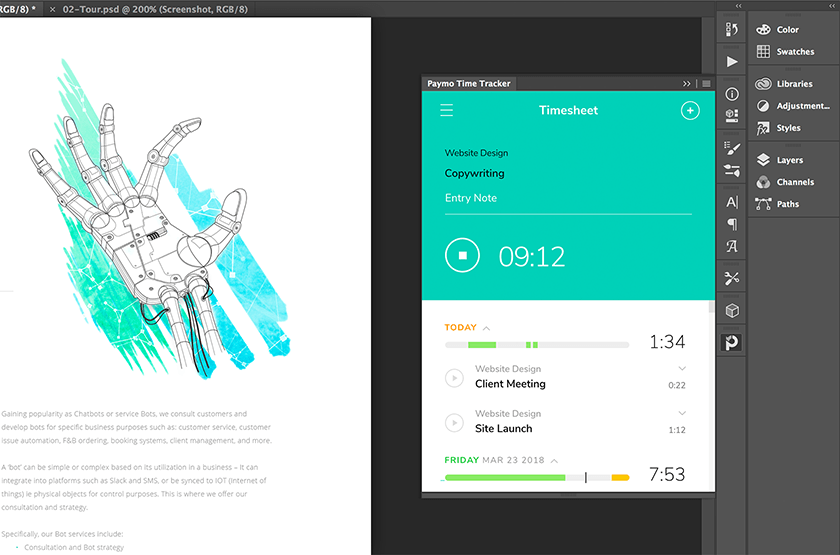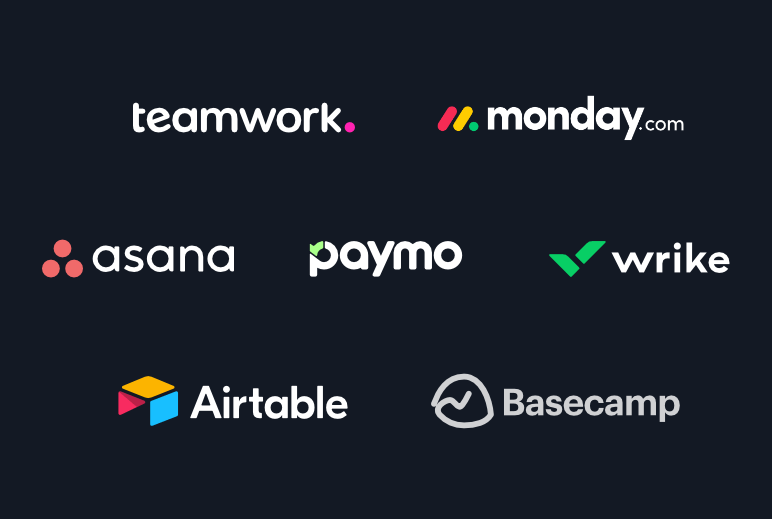The “work smarter, not harder” mantra has been around since 1930, when Allen F. Morgenstern, an industrial engineer, coined it to simplify how workers did their jobs. From excited students ready to set off on their path to a project manager career to freelancers ready to work hard, breaking into their niches—everyone has heard this motto.
But things have come a long way since then, so does this motto still apply in the current context?
Work smarter, not harder, in today’s workplace
We can’t just take an idea from almost 100 years ago and hope it’s still valid. Morgenstern aimed to make people do their jobs with less effort in an age where people were primarily working dreadful jobs in steel mills, on the fields, or in manual assembly lines six days a week.
Today there are just as many changes as there are fields of work and various environments, like a home office or a hybrid system in place. Surely, there are pros and cons to working remote jobs, but there’s useful advice on how to navigate any new work environment in this day and age.
The industrial era was replaced by software that made our lives and jobs more manageable, with laborious work replaced by mental work in return.
Despite this, everyone still tells you to work harder and put consistent effort into your pursuits. That’s due to all the successful people who already endorse it as a key factor in achieving fulfillment. To name a few:
“All roads that lead to success have to pass through hard work boulevard at some point.” —Eric Thomas
“Love your family, work super hard, live your passion.” —Gary Vaynerchuk
These are all nice words, but nobody knows what to do to succeed. And even if they did, chances are they wouldn’t publicly tell us.
So, we’ll have to test things out ourselves. To give you a head start, I’ve prepared a run-through of all the key actionable tips you should master to improve your work. Bookmark them, or write them on a note to have them nearby:
- Improve the way you manage your time
- Use digital tools
- Delegate work
- Prioritize the right way
- Keep meetings to the point by involving the right people
- Don’t be afraid of change or tests coming your way
- Ask the perfect questions
- Stay happy!
There’s a lot to be said about outstanding productivity. So, let’s start:
Improve the way you manage your time
Time is your first and most important resource. I’m sure you’ve heard this before and how vital it is to manage it. But how can you do that?
Besides the general advice like setting realistic deadlines or avoiding distractions, there are a couple of actionable techniques you can put into practice. Like dividing your day into distinct chunks of work with downtime breaks in between. According to a study conducted by K. Anders Ericsson from the Florida State University, 90 minutes is the working interval most likely to create high performance at the workplace—anything above this only decreases your productivity.
People have different time spans, though, for being more or less productive. That’s why you should pair this up with a set schedule. Without a clear one, you’ll postpone all of your activities indefinitely. So you should either divide your day into these 90 minutes or two separate 4-hour periods in the morning and evening with one large break at noon.
If you’re a fan of shorter breaks, there’s the ever-popular Pomodoro technique. This idea is that working in batches of 25 minutes followed by a 5-minute break will boost your productivity while keeping your creative juices flowing. You can customize this process and work for more minutes or even an hour but stick to consistent intervals.
Here’s a breakdown of how the Pomodoro technique works:

If you want to stick to the basics, go for a traditional timekeeping device, like a phone timer, a classic alarm clock, or an advanced time tracker that monitors how you spend your time on a given task or project.
A time tracker is a bit different as it records your work hours so you can later analyze the data and get a closer look at how you’re spending your time. Time tracking is an excellent solution for time reporting. When trackers are part of a time tracking tool that will offer complete reports so you can see where you’re slacking and improve how you handle time.
![]()
Time tracker in use in Paymo
Regardless of the methods, you’ll choose to manage your time. It would be best if you reconsidered how you multitask. Working on multiple things at once can decrease your efficiency by as much as 40%. So next time you feel like you can’t focus on your work, it might be because you’re doing too much at the same time or there’s another issue bothering you.
In both cases, the solution is simple: systematically handle each task according to their priorities—more on that later in this article.
Use digital tools
While Morgenstern and his fellow engineers had to think of innovative ways of outsmarting the dreadful work processes of their times, today’s average workers have to go online and use simple work management software that does the work (in full or in part) for them in real-time.
Easy right? Not so fast. Although tech evolution has inevitably brought many options, testing all of them would be impossible. Plus, it would take a lot of time and go against the time management tips I’ve already mentioned.
To find the relevant tools for you:
- Check ProductHunt every day for the latest software launches.
- Search for tools and reviews on independent review platforms like Capterra or G2.
- Have a look at this list of free tools for freelancers (and individual team members) we put together.
There’s a solution for everything: image editing tools even non-designers can use, social media planners to automate your posts, online code editors, web timesheet software for the best automated reporting functionality, keyword generator tools, this platform that helps companies and individuals legally sign documents online, even top employee time tracking software to clock in work:

Paymo widget docked in Photoshop.
Delegate work
In his book “The 4-Hour Workweek”, Tim Ferriss admits that he resorted to outsourcing smaller tasks for virtual assistants to reduce the number of hours he worked in a day. That’s one way of working smart: asking for help.
Now the idea of working only 4 hours each week is not so realistic if you’re looking for great results in the long run. But delegating your tasks is one aspect you should consider.
As a freelancer or part of a team, some tasks could be done by someone else. Whether you’re a writer looking for illustrations from a designer or a business owner who needs a web developer to set up an online shop, you can always find a person who might be better at that extra job than you or has more knowledge on the topic.
Imagine you were a developer and needed to take care of the bookkeeping. You can either hire a professional accountant or spend countless hours learning all the best practices and policies. The latter choice is what you’d call hard work.
But here’s another thing to keep in mind from Tim Ferriss’s book,
“Never automate something that can be eliminated, and never delegate something that can be automated or streamlined. Otherwise, you waste someone else’s time instead of your own, which now wastes your hard-earned cash. How’s that for an incentive to be effective and efficient?”
The growth of artificial intelligence is bringing more opportunities for humans to stop wasting their time. There are lots of AI-based automation and testing tools to speed up the software development process—you can even ask this tool if your photo is good or too “stocky.”
YouTube now auto-generates video captions. This proves how delegating will be so much easier in the future when you no longer have to wait for someone else to deliver what you asked for or bury yourself in invoices. Speaking of invoicing 101, if you’d like to learn what a digital invoice is, or the benefits of invoicing, we recommend you read this complete invoicing guide.
Prioritize the right way
Another case of “Everyone tells me this, but I don’t know how to do it.”
I mean, it’s normal to feel like you can’t get your tasks in order. Especially when you’ve got so many important things, each screaming for their fair share of attention. So here are three essential tips to keep in mind when prioritizing work:
The Eisenhower Decision Matrix
This technique helps you distinguish between urgent tasks that demand immediate attention and important ones you can complete at any other time. The Eisenhower matrix allows you to separate tasks into four different buckets—important and urgent, important but not urgent, not important but urgent, and not important or urgent.

The Pareto Principle
The Pareto Principle is also known as the 80/20 rule. This method relies on the principle that 20% of your tasks are responsible for roughly 80% of your results. Applied to business, this can mean that 20% of salespeople are responsible for 80% of sales, 20% of your clients bring 80% of the total profit, 20% of bugs lead to 80% of software issues, you get the point.

Getting Things Done®
The GTD method is a 5-step framework created by David Allen to help you handle your duties in a structured and relaxed manner without having a lot of “brain tabs” open. To implement it, follow these steps:
- Capture – put down all of the ideas and activities that demand your attention
- Clarify – make sense of each idea and what you can do with them
- Organize – sort your activities into lists
- Reflect – take the time to analyze what you’re doing regularly
- Engage – work on your ideas
Here’s one example of a GTD diagram to clarify how this process works:

Keep meetings to the point by involving the right people
Too often, meetings are a huge time waster. Mainly because not everyone will be directly concerned with all topics. But just talking to your colleagues via chat or a chain of emails is not the way to go if you want to ensure everyone is doing their work the right way.
Details could get lost between tens of messages, and you’ll have to redo your work several times. Not holding meetings is by no means a solution.

The simple answer to this problem is to keep meetings to the point and hold them only when necessary. Above all, make sure you involve only the right people, so you don’t bore the rest. 73% of meetings involve 2-4 people on average, and that’s the healthy way to go.
If you’re looking for the answer to help you solve this issue, check out my comprehensive article on this topic to hold a super productive meeting.
Don’t be afraid of change coming your way
Fear of failure is what stops people from reaching their goals. But without accepting risk, no matter how small, you’re less likely to attain them.
Instead, be prepared to fail. Make extra plans, learn from your previous mistakes, try anything that can make you profit from your past errors.
But if it’s so easy, why isn’t everyone successful in their trade? Because they eventually give up. They try once, twice… ten times, but they give up just before they’re able to get their big break. When you’re told never to stop trying, that means NEVER.
Once you forget this, it will be much harder to do what you’ve put your mind to. The main idea behind the “work smarter” mantra is to muster up the courage to first pass through challenges and heed the lessons from them.
Ask the “perfect” questions
Sure, “working smarter, not harder” sounds like an excellent way to spend your life, but you’ll need to learn how to ask intelligent questions. To give you a head start, I’ll brief you on a couple of aspects to keep in mind when you’re looking for that perfect piece of advice:
- Don’t be afraid to ask that question. We’re losing so many good ideas because we’re too scared to say them out loud. The same goes for any questions you might have. If something’s not clear enough, it’s best to ask as many times as needed than to have to fix a mistake due to lack of knowledge.
- Avoid suggesting an answer when asking a question. Compare the following two phrases: “This is a good choice, isn’t it?” versus “Which one is a good choice?”.The first question implies that one answer is right over the other. This could influence the audience to pick the answer automatically implied by the speaker.
- Have at least one goal in mind for each question. What is it you’re looking for through your question? Do you need a suggestion? A concise answer? More guidance? Regardless of your goal, try to come up with questions for each one, so you’re not missing any details. Often a question leads to an entire conversation that can spark new ideas you wouldn’t have otherwise come up with. Just think of every question you haven’t asked as a lost opportunity, and I’m sure this will incentivize you to be a bit more daring and get the feedback you need.
- Ask when appropriate. You’re not going to get the answer you’re looking for if the person you’re talking to doesn’t have the time to focus on the topic entirely.
- Make sure you get at least one actionable answer. – The end goal for any question is an answer that will help you continue your work. Don’t ask questions just for the sake of asking them. If your first question didn’t lead to the answer you needed, ask another question until your demands are met. You can also follow the 5 Whys technique for this.
Just stay happy at work
Work satisfaction has constantly been linked to how happy people are at work. Smart work is all about knowing when to stop rushing your daily life. A study conducted by Morten T. Hansen proves that top performers focus on fewer things. Having multiple goals to take care of at the same time only shifts your focus from the ones that matter the most. So learn to slow down.
Beyond everything, you can find happiness at work if you’re working a job you love. Yes, you’re tired of hearing this over and over again. But think about it—you’ve got roughly 10 to 30 years to discover what you genuinely like doing and make a business out of it. So if you’re already in your 30s and thinking about a career change, go for it! And if you’re too afraid of failing, start with baby steps. Turn your hobbies into a side gig or get a part-time job as a starting point in your new career path.
Now is the perfect time to take a leap of faith, as the Great Resignation of 2021 taught us that work culture is not iron-clad but constantly changing and developing. Explained in simple terms—if you’re not happy at work, the onus is on you to actuate change.
I’ll say that the “work smarter, not harder” motto only applies to people who are not caught up in jobs they hate. If you’re working for the sake of getting paid, the chances of staying motivated and coming up with smart work ethics are close to zero. Once you’re thoroughly enjoying your day-to-day work, you’ll be actively looking into finding new ways to improve your work.
Hard work was mostly a thing of the past when most jobs were physically demanding out on the field or within a factory. I strongly recommend you go on and read Annie McKee’s book, “How to Be Happy at Work,” which debunks work-related myths like how hard work is the only thing you should know or why bygone expectations are no longer the case in the current workplace.

Putting it all together
Remember that working hard is a natural part of your professional development and not something you should be afraid of. Consider all of the given tips but be prepared to work hard whenever needed. In the end, success, in the long run, is a mix of these two concepts. It’s really up to you to decide what aids your practice. Whether that’s working hard or not, do what performs best for you. There’s no one way to reach your goals.
And, above all, don’t forget to work happy.
First published on August 6, 2019.

Alexandra Cote
Author
Alexandra Cote is a SaaS content writer and strategist with a passion for workplace productivity, social media marketing wonders, conversion rate optimization, artificial intelligence, and keyword research. Reach out to her via LinkedIn.


